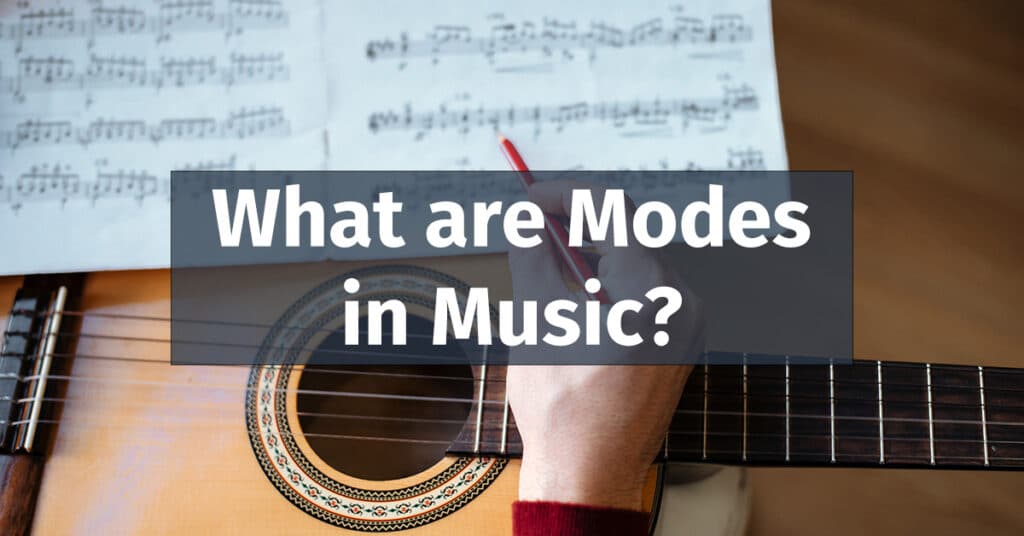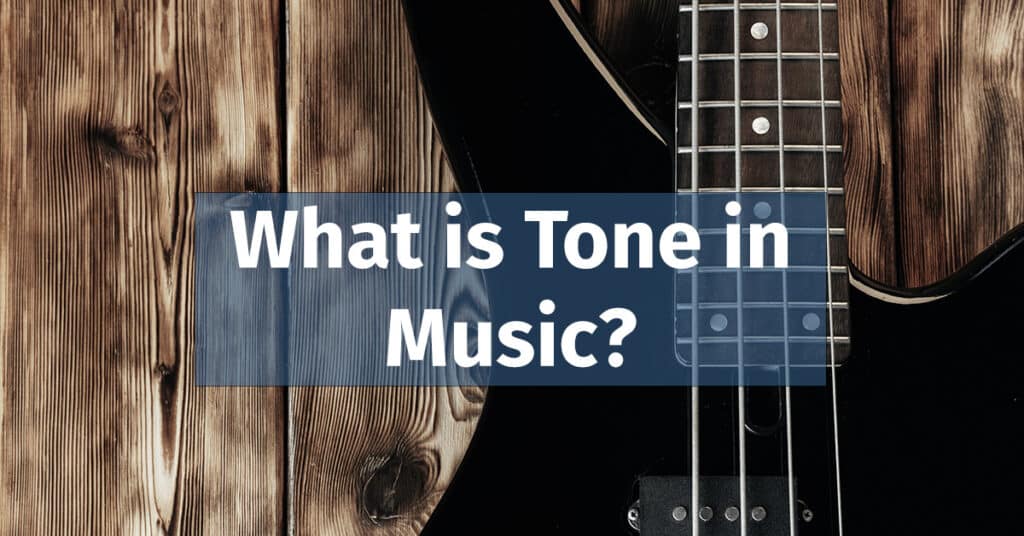Modes in music are unique variations of a diatonic scale, created by starting the sequence from a different degree, each offering a distinct tonal character and emotional resonance.
Introduction
Following our exploration of musical scales in the previous article, let’s delve deeper into the wonderful world of modes. Much like dialects lend unique nuances within a language, modes add a rich layer of variety to our musical vocabulary.
Understanding Modes in Music
Modes are different ways of playing diatonic scales by choosing a different starting note, or degree, within the original scale.
These modes are variations of the major scale, sharing the same notes but starting from a different degree. As a result, the order of whole and half steps shifts based on the starting degree, giving each mode its distinct tonal personality.
Each mode brings unique musical possibilities and plays a significant role in many music genres, especially jazz and classical music.
The Seven Musical Modes
In the context of Western music, there are seven modes. These seven musical modes are Ionian, Dorian, Phrygian, Lydian, Mixolydian, Aeolian, and Locrian.
To facilitate understanding in the following sections, we will present each mode using the C Major scale. This scale is often chosen for illustrative purposes because it consists entirely of natural notes — those not modified by accidentals. This means that it utilizes only the white keys on the piano.
However, it’s important to note that any major scale’s degree can serve as a starting point for a mode, provided the sequence of whole and half steps distinctive to that mode is maintained from the starting degree.
The following image graphically illustrates the unique interval sequence of each modern musical mode. The squares represent the sequence of whole (W) and half (h) steps that define each mode, emphasizing the subtle changes in tonality that give each mode its distinct character. Shifting the starting point on the grid visually represents how modes derive from one another, beginning with the Ionian mode and ending with the Locrian mode.

Ionian Mode (Major Scale)
The Ionian mode corresponds directly to the major scale. This is due to its sequence of steps: Whole-Whole-Half-Whole-Whole-Whole-Half, which is identical to the pattern followed by the major scale.
This consistency is because the Ionian mode, like all musical modes, originates from a major scale and retains its sequence of intervals. However, what distinguishes the Ionian mode is that it starts from the major scale’s first degree or the root note.
Often associated with bright or joyous feelings, the Ionian mode’s tonality has a distinct character. As with any other mode, the Ionian mode can begin on any note. For instance, if it starts and ends on C, the sequence of notes becomes C-D-E-F-G-A-B-C, identical to the C major scale.
Ionian Mode Pattern: W W h W W W h
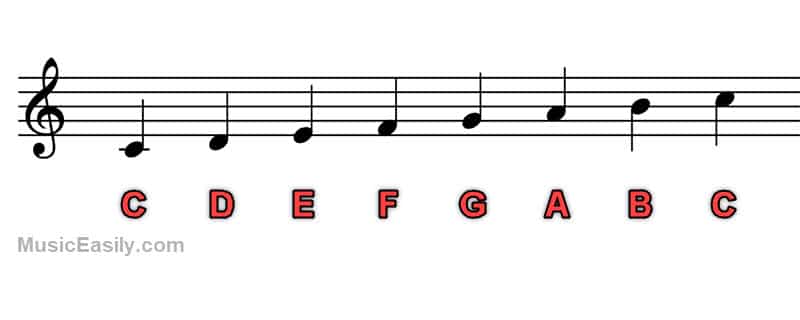
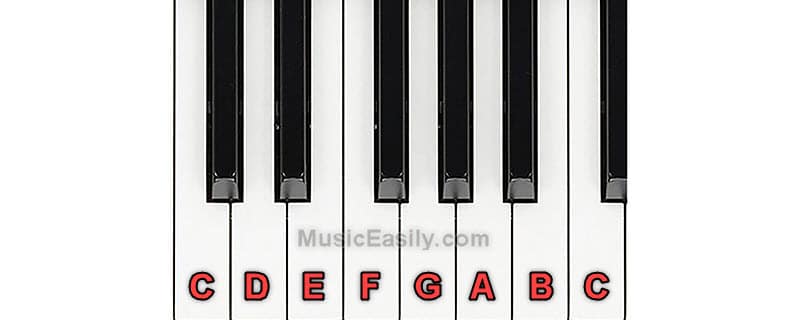
Dorian Mode
We find the Dorian mode from the second degree of the major scale. This mode typically has a bluesy or jazzy feel, partly due to its minor third, which lends a minor tonality. However, a distinguishing characteristic of the Dorian mode is its raised sixth, which sets it apart from the natural minor scale. The sequence of intervals is Whole-Half-Whole-Whole-Whole-Half-Whole.
Dorian Mode Pattern: W h W W W h W
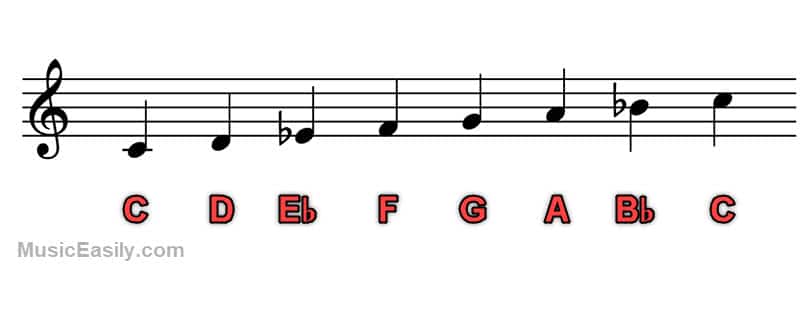
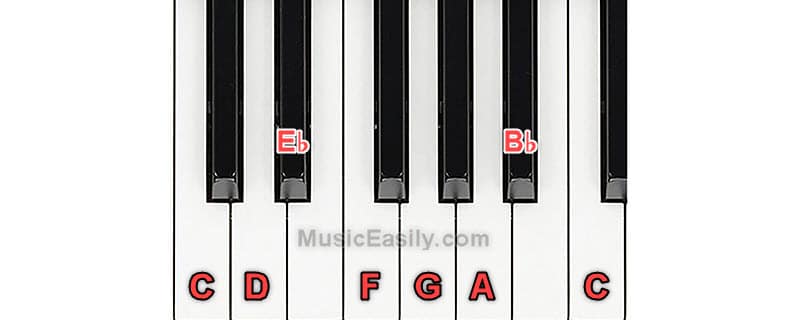
Phrygian Mode
We encounter the Phrygian mode from the third degree of the major scale. This mode stands out due to its distinctive minor second interval, which gives it an exotic, somewhat mysterious auditory character. The order of intervals for the Phrygian mode follows the pattern: Half-Whole-Whole-Whole-Half-Whole-Whole.
Phrygian Mode Pattern: h W W W h W W
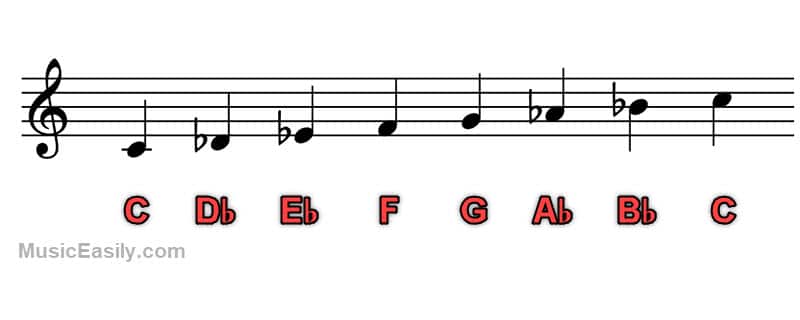
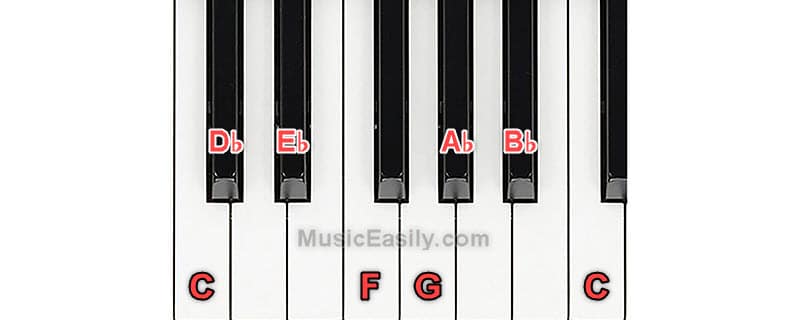
Lydian Mode
We discover the Lydian mode from the fourth degree of the major scale. The Lydian mode’s augmented fourth makes it stand out, creating an ethereal and somewhat unresolved tonal feeling. The sequence of intervals in the Lydian mode adheres to the following pattern: Whole-Whole-Whole-Half-Whole-Whole-Half.
Lydian Mode Pattern: W W W h W W h
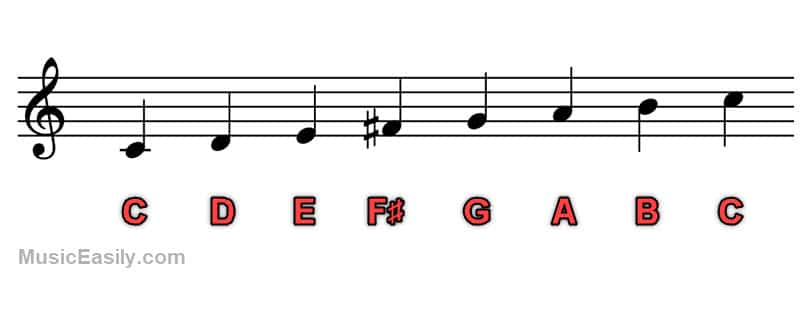
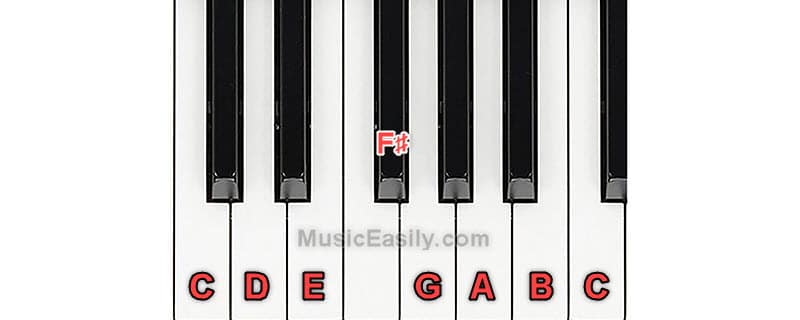
Mixolydian Mode
Deriving from the fifth degree of the major scale, we encounter the Mixolydian mode. Though the Mixolydian mode shares many characteristics with the major scale, it is differentiated by the presence of a minor seventh, lending it a distinct bluesy tone. This feature has made it a popular choice in rock and blues genres. The pattern it follows is Whole-Whole-Half-Whole-Whole-Half-Whole.
Myxolydian Mode Pattern: W W h W W h W
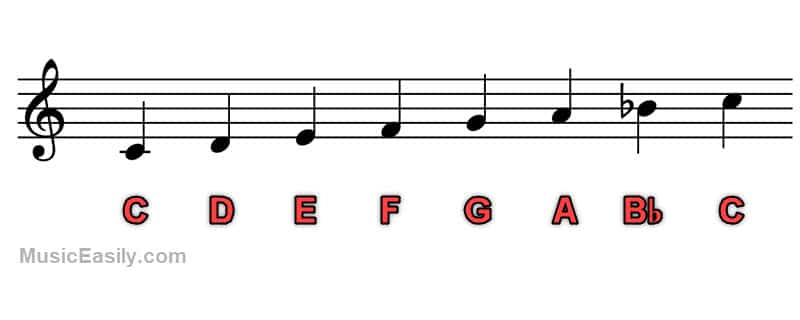
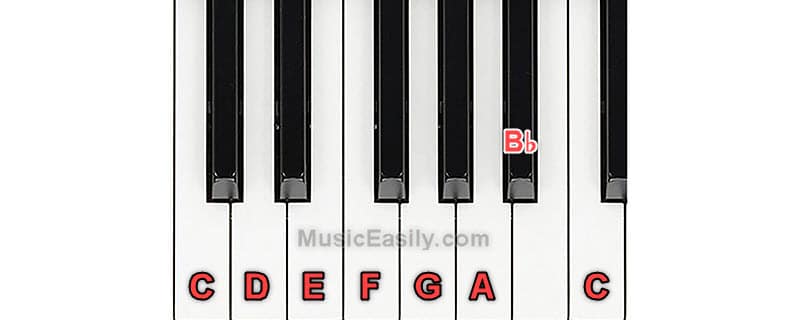
Aeolian Mode (Natural Minor Scale)
We encounter the Aeolian mode from the sixth degree of the major scale. Identical to the natural minor scale, this mode is characterized by its sad tonality. This feature has made it a common choice in pop and classical music genres.
The reason for the Aeolian mode’s equivalence to the natural minor scale lies in its interval sequence: Whole-Half-Whole-Whole-Half-Whole-Whole. This pattern aligns perfectly with the structure of the natural minor scale, mirroring its distinctive sequence of tones and semitones. Hence, when we talk about the Aeolian mode, we refer to the natural minor scale from a modal perspective.
Aeolian Mode Pattern: W h W W h W W
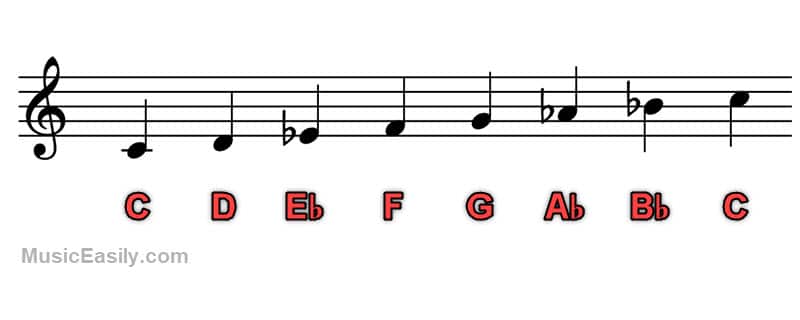
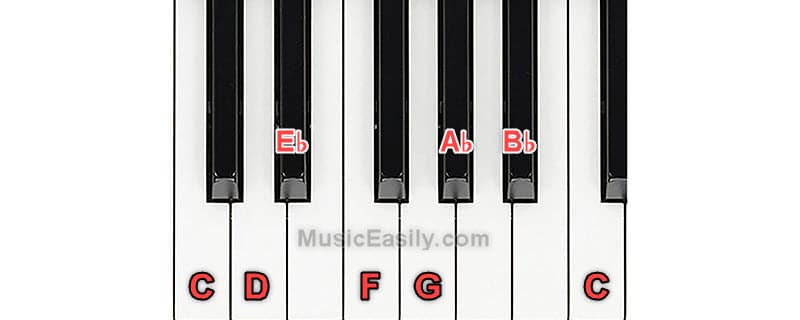
Locrian Mode
Starting from the seventh degree of the major scale, we encounter the unique Locrian mode. This mode is distinguished by being the only one with a diminished fifth, making it an unstable and tense sound. For this characteristic, it is seldom employed for complete compositions.
The Locrian mode’s sequence is Half-Whole-Whole-Half-Whole-Whole-Whole. Although not commonly used, a comprehension of the Locrian mode nonetheless enhances one’s depth of understanding in music theory.
Locrian Mode Pattern: h W W h W W W
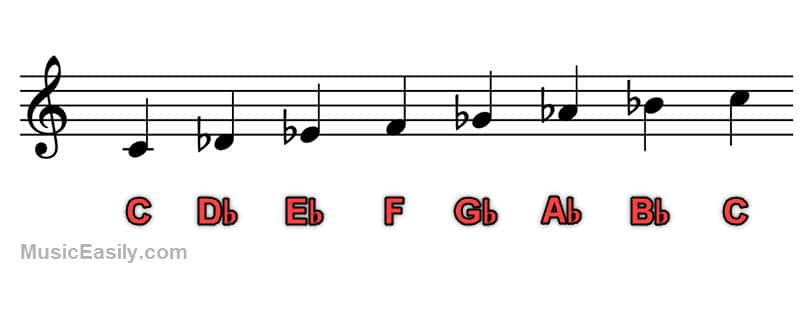
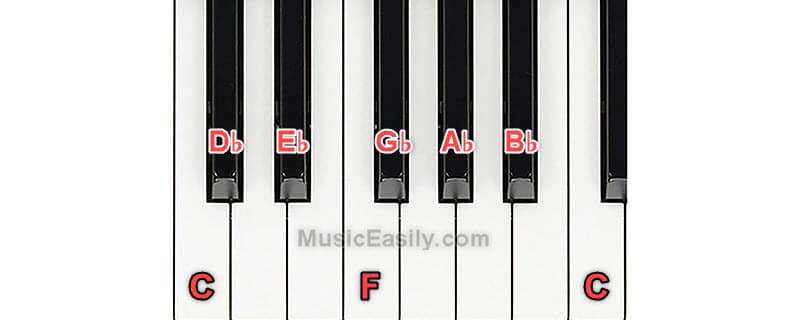
Modes in Music: Tools for Composition and Improvisation
As we wrap up our journey through musical modes, it’s essential to underline their real-world applications and influence. Modes in music aren’t just theoretical constructs; they’re vital tools that can dramatically shape a piece’s mood and character.
For composers and songwriters, modes provide a roadmap to color, emotion, and tonal variety. Each mode’s unique sequence of intervals can inspire melodic and harmonic ideas, expanding your creative toolbox.
Knowing musical modes is essential for improvisers, especially in jazz and fusion contexts. It helps you navigate chord changes and convey different moods or tonal colors on the fly.
So, don’t just learn musical modes – explore them, play with them, and make them your own. Doing so will deepen your understanding of music, broaden your creative horizons, and enrich your listening experience.
